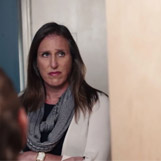
Ideas, and how they’re expressed, are at the center of all movements for change. Success in securing equality for LGBTQ Americans requires a clear and compelling approach to messaging and communications. MAP explores the principles of effective communications for the LGBTQ movement and our allies so that, together, we can help Americans understand the importance of change.
Most Americans simply don’t understand the inequalities faced by lesbian, gay, bisexual and transgender people—and how those inequalities affect their lives. Through effective conversations, we can help more Americans see that the movement for LGBTQ equality is really about everyday Americans wanting the same chance as everyone else to earn a living, pursue health and happiness, be safe in their communities, serve their country, and take care of the ones they love. It’s not just about gay people. It’s not just about transgender people. And it’s not just about straight people. It’s about all of us.
To reach the public, LGBTQ organizations need to identify their priority audiences, develop compelling messages, select and train spokespeople, target the right media, and take other steps to communicate effectively. MAP provides resources and information about how LGBTQ organizations can frame issues and run communications campaigns that move equality forward.






